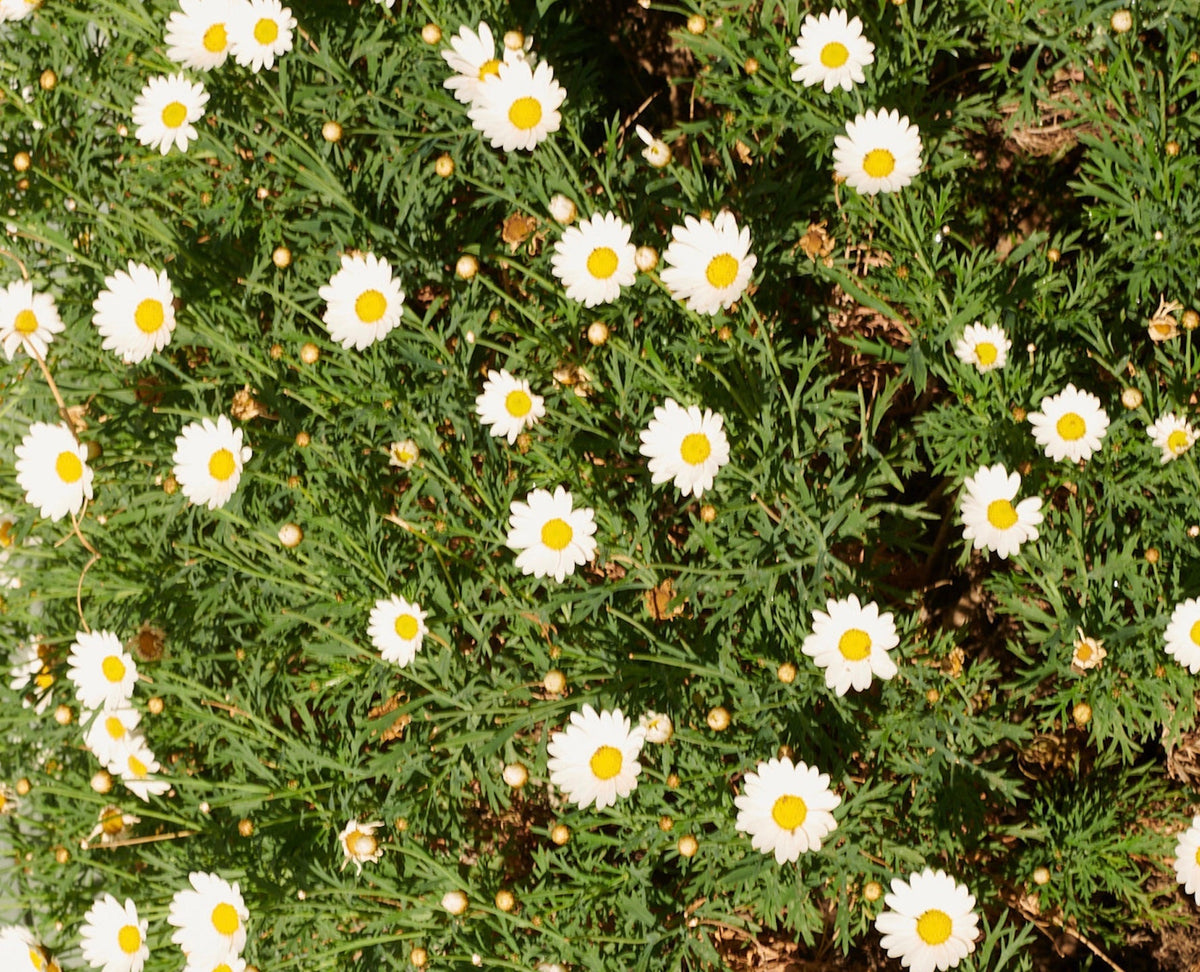

This is the first inaugural post of our Edible Flower Series! In this series, we'll highlight a different edible flower every month (depending on what's in season, of course) and break it on down. We'll look at everything from ways to bake, medicinal benefits and historical anecdotes.
Don’t get it twisted: plants are more than just their flowers. Seeds, fruits, leaves, stems and roots are all not only integral to the health of the plant, but to the health and happiness of humans, too. The edible wonders our nature provides are endless. So we hate to leave out marvels like almonds (seeds), blueberries (fruit), thyme (leaves), fennel (stems) and turmeric (roots), but this series is focused on edible FLOWERS! Don’t worry, the others will have their day in the sun. We have more series to come!
This month, we’re digging the chrysanthemum.
EAT YOUR CHRYSANTHEMUM
Here in the northern hemisphere - just before the Spring Equinox - daisy flowers are at the peak of their growing season. You may have noticed them blooming all over social media. The dainty daisy is a relative of the larger genus chrysanthemum, a noble title that comes from the Greek words “chrysos” meaning gold and “anthemon” meaning flower.

We use pressed chrysanthemum in our cookies, tarts and pies. Chrysanthemums come in over a hundred cultivars such as button, pompon, spider and of course, the daisy. This lovely cultivar grows those long, slender petals we typically associate with reciting “she loves me, she loves me not.” That (savage) game might leave a bitter taste in your mouth – and so can the chrysanthemum after baking. It’s an aromatic, complex bitter though, similar to how Campari (am I losing anyone yet?! No negroni lovers?! C’mon!) can jolt the system. It’s a strong botanical, both in taste and in power.
FLOWER POWER
Now, we know the chrysanthemum is celebrated for its gold color, but it’s also a real goldmine when it comes to medicinal properties. The flower has long been used in Chinese traditional medicine - as early as the 15th century - for its “cooling,” or calming effect. It’s been used to treat ailments from digestive issues to high blood pressure, headache, chest pain and stress. Chrysanthemum tea is a wonderful way to extract the flower’s potential, and is most often consumed to reduce inflammation. Chinese medicine associates the condition of inflammation with having too much “heat” in your body. This could be caused by something as simple as consuming too much spicy food, and could materialize as dry mouth, skin breakouts among other symptoms.
Beyond inflammation, Chinese medicine has used the power of this flower to treat all kinds of ailments such us:
- Chest pain
- Diabetes
- Dizziness
- Angina
- Common cold, cold or canker sore
- Digestion
- Fever
- High blood pressure or cholesterol
- Reducing inflammation
- Headache
- Even stress
If you’re considering trying out this botanical, such as in a chrysanthemum tea, please use appropriate caution. As a general disclaimer: while we love to share our enthusiasm for medicinal plants, please note this research should not be considered legal medical advice.
ETERNAL LIGHT
As with all naturally occurring phenomena, humans all over the world have assigned meaning to the chrysanthemum. In Japan, the chrysanthemum adorns every passport, representing longevity, eternal youth and nobility.
The Japanese passport, which can currently visit 191 countries visa-free, garnering it the title of “most powerful passport.” Credit: Escape (Australia)
BONUS PLANT POINT
As much as we love our bugs (just me?), some can be real threats to your garden game. You may be excited to learn that certain types of chrysanthemum flowers are “companion plants,” which help repel insects from their plant neighbors!

Thanks for celebrating the daisy chrysanthemum with us this week. And if you haven’t already, go check out those beautiful daisy blooms on Instagram (and no, we don’t mean Katy and Orlando’s baby girl, though certainly she’s just as cute).
